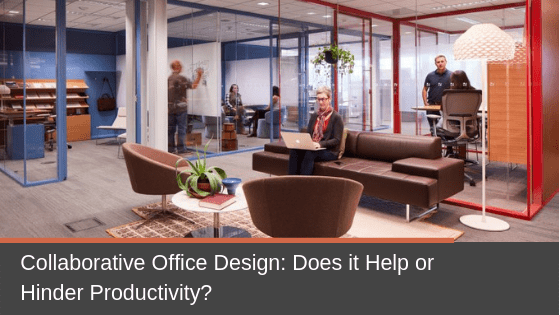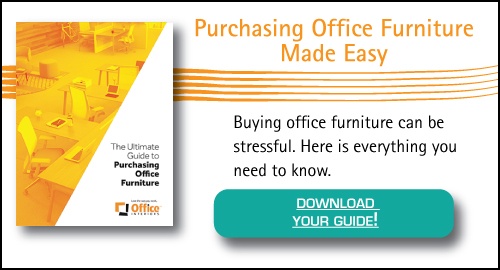There’s little doubt that modern work requires collaboration. But have we gone too far in our use of collaborative office design to encourage more face-to-face encounters?
Critics of the open-office layout would say yes. But when it comes to collaborative space, can you really have too much of it? Let’s look at what the research says.
Poor Collaborative Office Design Hurts Productivity
In the 1990s, the open layout was hailed as the epitome of collaborative office design. The thinking was that by encouraging more chance meetings and unplanned interactions around the office, employees would collaborate more and become more productive.
What better way to do that than to put employees altogether in one space? It was a sound premise, but it didn’t always pan out.
Employees found open spaces noisy and distracting. And, as it turns out, open-concept offices weren’t all that collaborative either. Results of a 2018 Harvard research study proved what many critics had already concluded: open-plan offices snuff out collaboration not ignite it.
The study looked at participants at two Fortune 500 firms before and after an open office redesign. It showed their face-to-face interactions dropped by nearly 70 percent after the walls came down. Instead of seeking each other out, employees retreated to less social interactions like email and instant messaging. The results also showed that as face-to-face collaboration went down, so did productivity.
Another study showed 63% of employees in open offices reported that noise and a lack of quiet places to work negatively affected their productivity, satisfaction and well-being.
Flexibility is the Secret Sauce for Collaborative Spaces
So, what happened? Why didn’t the open office spark the kind of rich collaboration people expected? For one thing, rigid open office designs ignore the fact that there’s a lot of quiet, solo work required to come up with innovative solutions to complex problems.
Collaboration, like office work in general, is never one cohesive activity. It’s an ebb and flow of different interactions that include individual thinking, group brainstorming and quiet reflection. Employees transition from one style of work to another throughout any given day or week.
The new focus in collaborative office design is on people, making spaces a better fit for the kind of work people actually do every day. For instance, workers are no longer tied to their desks like they were in the past. They move around and can email and talk on the phone from anywhere in the office.
Why not capitalize on that by creating more nooks near common areas, where employees can run into each and then quickly slip into a more secluded spot to have a more in-depth conversation?
The ideal approach is to strive for a balance between me space, and we space. Employees need places where they can spontaneously meet and socialize and areas where they can collaborate and innovate together. But they also need places where they can sit alone and ponder.
In Ethonomics: Designing For The Principles Of The Modern Workplace, the authors describe the modern office as “places for creativity and collaboration, requiring spaces that support fluid and spontaneous interactions—but also quiet spaces that minimize noise and the potential for disruption when thinking, analyzing, writing and reading.”
Don’t Ditch Your Open Office Just Yet
Although many people love to hate the open office plan if it’s planned the right way, an open design can foster collaboration and enhance productivity, it’s still the most popular office design, and that’s not likely to change any time soon.
By adding a few flexible design touches, you can turn an open layout into a more productive workspace. Multipurpose collaborative furniture and privacy screens are great ways to transform a space. For instance, a workstation can double as a standing desk or moveable screens can quickly turn a public space into a private one.
Creating a productive collaboration space is about making your office more versatile and finding that ideal balance between areas where employees can work together and spaces where they can find some peace and quiet.
Brush up on more office design trends in our free whitepaper Office Trends to Know, grab your copy today!
Cory Porteous
Director of Marketing & Inbound Business Development
Office Interiors




